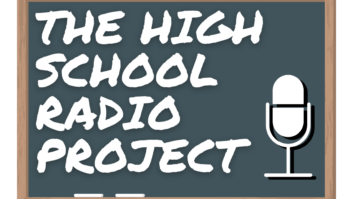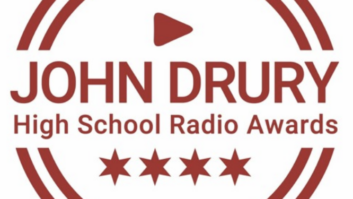Probably few knew that John Battison (“John Battison Dies, Was Father of SBE,” Sept. 12) was a Royal Air Force Spitfire pilot in the Battle of Britain during World War II.
Those were the dark days of the war, when 966 Allied aircrew were killed or wounded during the summer and autumn of 1940 while saving England from a German invasion. This prompted British Prime Minister Winston Churchill to declare, “Never was so much owed by so many to so few.”
Mark Persons
M.W. Persons & Associates
Brainerd, Minn.
The author is a regulator contributor to Radio World.
AM for the Rest of Us
I have enjoyed the recent articles on how to save AM radio. The commentary from Saul Levine (“AM: Drop the Gloom and Doom,” Sept. 26) got me to the keyboard.
I guess I am one of the rare people in our beloved business: a single owner of a single AM station. Last summer, I was evicted from my transmitter site for apartment construction.
Fifteen months later, not one shovel of dirt has been turned. Meanwhile, I struggle to hold onto what’s left of my investment with a 125-watt STA. It covers my community adequately enough, but I can’t license it. There have been some great ideas about how to save our medium. But for many like me, the costs are prohibitive.
Mr. Levine’s suggestion to drop the doom and gloom is wonderful. I believe in AM, too. I like his idea of buying the best equipment to get the best sound possible with the strongest signal, too.
But most of us aren’t in Los Angeles. That doesn’t work for us. It is very hard to generate sales with a standalone AM in a very small market. (In my market, 12 of the 14 stations are owned by two corporations, which take most of the money.)
Having owned a station for nearly 15 years has been a dream come true for someone who started out in high school as a weekend jock at the top 40 station. As long as my STA keeps getting renewed, there is hope that a financial solution will present itself.
There are plenty of options; 250 watts, non-directional is the best and cheapest. But even that is currently out of reach.
I know there are some who will say that people like me who struggle to survive should just quietly go dark and help clear the dial. And maybe they are right. I believe that the business will be greatly harmed when the little, local guy like me is gone. I hope to still be on the air, when that AM solution is finally found.
Bruce Merchant
Owner
KEZM(AM)
Sulphur/Lake Charles, La.
AM Deserves to Be Saved
I no longer lose sleep over the proposals to save AM coming from the NAB. Some years ago, they embraced Eureka Digital Radio, then quickly dropped it. Then came the iBiquity Radio system that granted more channels to the FMs and a mediocre system to the AM. Now they are playing with all-digital on AM.
Can they tell me how I am going to keep my clients if I go all-digital on my AM and there are no radios to listen to it? I had an FM when FM was not cool, so believe me: I know how it is.
Why not support the proposal to expand the FM band into TV Channels 5 and 6?
There are 143 TV stations of all sorts on Channel 6. Can we sacrifice 4,754 AM stations and thousands of jobs for 143 TV stations? Why not relocate those stations on Channel 6 to the additional channels granted to TV? Some TV stations don’t even use those channels.
How about giving the AMs one FM HD channel? There are enough FM stations in my market to give every AM station an FM HD channel. Some FM stations are not using their HD channels.
In the old days, they use to call that “efficient use of the spectrum.” It must be a transmission mode that allows transition. Those who think that it is a programming problem with AM need to come to Florida and try listening to 50 kW AMs during summer thunderstorms. You will tune out to FM or satellite so fast you will not be able to see your finger punch the radio button. Try listening to AM next to a computer or in a building full of computers.
If it is a programming issue, why is the switch of talk stations to FM occurring? FM and TV were given digital improvements and free extra channels to generate more revenue. AM built this industry, and it deserves to be saved.
George Arroyo
Owner
WONQ(AM)
Orlando, Fla.
Making Plans, Out of Sight
Just so I have this straight:
The NAB’s got a special committee to chart the future of AM, but most AM broadcasters aren’t privy to these plans, nor will they ever be until all constitutive choices are made (“Station Chosen for All-Digital AM Test,” Oct. 10).
Also, HD will provide the vector for digitalization, which we should just accept because it is what it is. Most of this from unnamed sources.
Radio World, you can do better than this.
John Anderson
Assistant Professor and
Director of Broadcast Journalism
Department of TV and Radio
Brooklyn College
New York, N.Y.
O, HD Where Art Thou?
The one thing that immediately hits home is how few HD Radio receivers are available. The ones that are available are rather pricey and not really portable. (I have yet to see a HD radio in a car.) However, if you want a radio that does Internet radio, iPod or the like, the field is wide open, with all manner of price.
Now, granted, there is very little HD Radio in the wilds of Idaho, but one would think that someone would offer such a beast. Even online, the pickings are slim and carry a really hefty price tag. Stores like Best Buy and Wal-Mart say they have HD Radios. Not in my neighborhood.
I do work for a public radio network, and they run HD, but they are talking about turning it off, as there is only a handful of people using it. There just doesn’t seem to be any interest in what is being offered.
I have read some interesting comments regarding HD Radio, especially since the passing of Leonard Kahn. There is a real buzz, especially when DRM is brought up, as it applies to AM and shortwave broadcasting.
We must search onward for the answers that will keep radio broadcasting viable and healthy. It can be done.
Mike Payne
Contract Engineer
Townsquare Media
Twin Falls, Idaho












